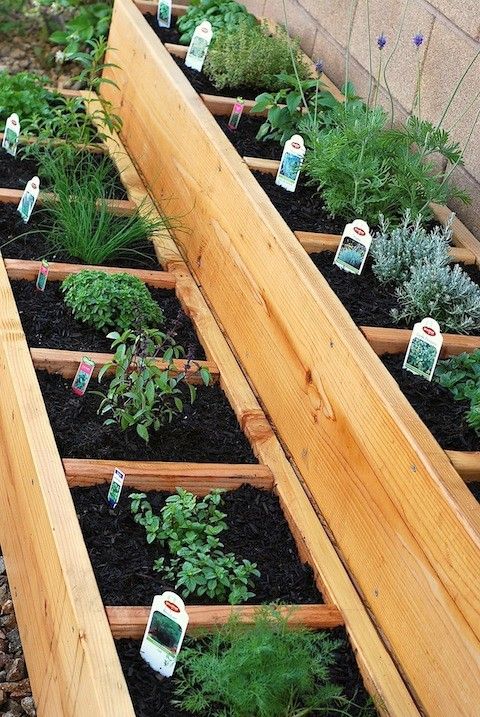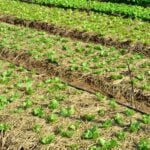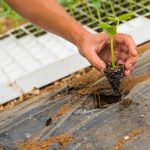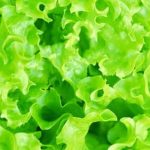Are you interested in growing vegetables but don’t have a big backyard or garden space? Have you considered growing vegetables in container gardens? This versatile method is ideal for urban and small space dwellers, allowing you to enjoy the benefits of homegrown produce without the need for a traditional garden. In this article, we will explore the world of container gardening, offering tips and guidance on how to grow a bountiful vegetable garden in containers.
Container gardening offers a range of benefits for those with limited outdoor space. From apartment balconies to small patios, this method allows individuals to cultivate their own vegetables regardless of the size of their living environment. With the right containers and suitable selection of vegetables, anyone can enjoy the satisfaction of growing their own fresh and healthy produce right at home.
In this comprehensive guide, we’ll delve into the different aspects of growing vegetables in container gardens. From choosing the right containers to selecting the best vegetables for your setup, we will provide valuable insights and practical tips to help you create a thriving container garden filled with delicious and nutritious veggies.
Whether you’re new to gardening or have some experience, there is something for everyone to learn from this exploration into container gardening for vegetable cultivation. So let’s get started.
Choosing the Right Containers
When it comes to growing vegetables in container gardens, choosing the right containers is crucial for the success of your plants. There are various types and sizes of containers suitable for this purpose, each with its own advantages and considerations. Here are some options to consider when selecting the best containers for your vegetable garden:
- Pots: Pots are versatile and suitable for a wide range of vegetables. They come in different materials such as plastic, clay, or ceramic, and offer portability and flexibility in arranging your garden space.
- Buckets: 5-gallon buckets are an inexpensive option for growing vegetables in container gardens. They provide ample depth for root growth and can be easily repurposed for this purpose.
- Raised Beds: Raised beds are ideal for larger vegetable plants or multiple crops in one container. They provide good drainage, aeration, and prevent soil compaction.
When choosing the best containers for your specific needs, consider factors such as the size of the mature plants, the location of your garden, and the aesthetic appeal of the containers. Also, ensure that the containers have adequate drainage holes to prevent waterlogging and allow excess water to escape.
In addition to traditional containers, consider unconventional options such as window boxes, hanging baskets, or even recycled materials like old tires or wooden crates. These unique containers can add visual interest to your vegetable garden while still providing a suitable environment for plant growth.
Overall, selecting the right containers is essential for successful vegetable container gardening. By considering the specific needs of your plants and finding containers that meet those requirements, you can create a thriving garden space regardless of limitations in outdoor space or access to traditional gardening plots.
Selecting the Best Vegetables for Container Gardening
When it comes to growing vegetables in container gardens, choosing the right vegetables is essential for a successful and bountiful harvest. While many vegetables can thrive in containers, some are better suited for this method of gardening than others. Below is a comprehensive list of vegetables that are well-suited for container gardening, along with tips for choosing the right varieties for your specific container setup.
1. Tomatoes: One of the most popular vegetables to grow in container gardens, tomatoes come in a wide variety of sizes and types, making them versatile for different container sizes. Determinate varieties such as patio or bush tomatoes are ideal for smaller containers, while indeterminate varieties can be grown in larger pots or even hanging baskets.
2. Peppers: Peppers, including bell peppers and chili peppers, also do well in containers. Choose compact varieties that are well-suited for small spaces, and make sure to provide adequate support as the plants grow and produce fruit.
3. Lettuce: Leafy greens like lettuce are perfect for container gardening, especially for those with limited space. Loose-leaf and romaine lettuce varieties are best suited for containers, as they don’t require a lot of depth to grow and thrive.
4. Herbs: Herbs such as basil, parsley, mint, and thyme are excellent choices for container gardening due to their compact size and prolific growth habits. They can be grown together in a single large container or individually in smaller pots.
When selecting vegetables for your container garden, consider your available space, sunlight exposure, and personal preferences when it comes to what you enjoy eating. It’s also essential to choose varieties that are well-suited to growing in containers, such as compact or determinate types that won’t outgrow their pots too quickly.
Soil and Fertilizer
Growing vegetables in container gardens requires special attention to soil and fertilizer in order to ensure the success of your crops. In this section, we will discuss the important factors to consider when it comes to soil and fertilizer for your container garden.
Choosing the Right Soil
The first step in creating a successful container garden is selecting the right soil for your vegetables. It’s important to choose a high-quality potting mix that is well-draining and nutrient-rich. Avoid using regular garden soil, as it tends to compact in containers and can impede root growth. Look for a potting mix specifically formulated for container gardening, which typically contains a blend of peat moss, perlite, vermiculite, and other organic materials.
Organic Fertilizer Options
When it comes to fertilizing your vegetable container garden, there are numerous organic options available. Organic fertilizers provide essential nutrients to your plants without the use of synthetic chemicals. You can choose from compost, aged manure, fish emulsion, seaweed extract, or organic granular fertilizers. These options not only nourish your plants but also improve the overall health of the soil in your containers.
Maintaining Soil Health
In order to maintain the health of the soil in your container garden, it’s important to regularly monitor its condition. Keep an eye on moisture levels and make sure that the soil doesn’t become waterlogged or dry out completely. Additionally, consider incorporating organic matter into the soil on a regular basis by adding compost or mulch. This will help replenish nutrients and improve overall soil structure, ensuring that your vegetables have everything they need to thrive.
By paying careful attention to the quality of your soil and choosing organic fertilizer options, you can set yourself up for success when growing vegetables in container gardens. The health of your plants ultimately depends on the health of their growing medium, so taking these steps will ensure that you have healthy and productive crops all season long.
Watering and Drainage
Proper watering and good drainage are two crucial aspects of growing vegetables in container gardens. Without the right balance of water and adequate drainage, plants can suffer from waterlogged soil, root rot, and other issues that can hinder their growth and development.
When it comes to watering your container garden, the frequency will depend on several factors, including the type of vegetable you are growing, the size of the container, the environmental conditions, and the type of soil used. Generally, containers tend to dry out faster than traditional garden beds, so it’s important to monitor the moisture levels regularly and adjust your watering schedule accordingly.
Overwatering can be just as harmful as underwatering for your plants, so it’s essential to find the right balance.
In addition to proper watering techniques, good drainage is equally important for container gardening success. A container with poor drainage can quickly lead to waterlogged soil, suffocating plant roots and causing them to rot. To prevent this issue, it’s crucial to choose containers with drainage holes or add them if necessary.
Elevating containers on bricks or pot feet can also help ensure better airflow and drainage. It’s also a good practice to use a high-quality potting mix specifically formulated for container gardening to facilitate proper drainage while still retaining enough moisture for plant health.
One way you can encourage proper moisture retention while preventing waterlogging is by adding organic matter such as compost or peat moss to your potting mix. These materials help improve soil structure and encourage adequate drainage without sacrificing moisture retention. By combining proper watering techniques with good drainage practices, you can create an ideal growing environment for your vegetables in container gardens.
| Aspect | Details |
|---|---|
| Watering Frequency | Depends on type of vegetable, size of container, environmental conditions |
| Drainage Importance | Avoids waterlogged soil and root rot |
| Potting Mix Addition | Organic matter like compost or peat moss for proper moisture retention and drainage |
Sunlight and Placement
Sunlight is one of the most essential elements for the successful growth of vegetables in container gardens. Most vegetables require at least 6-8 hours of sunlight per day to thrive and produce a bountiful harvest. When choosing the placement for your container garden, it is crucial to consider the sunlight requirements of the specific vegetables you plan to grow. This will ensure that your plants receive the necessary light for optimal growth and productivity.
For leafy greens and herbs, such as lettuce, spinach, and basil, partial shade or dappled sunlight may be sufficient. However, fruiting vegetables like tomatoes, peppers, and cucumbers require full sun to develop properly. It’s important to observe the sunlight patterns in your outdoor space throughout the day to determine the best location for your containers. Additionally, consider factors such as obstructions like buildings or trees that may cast shadows on your containers during certain times of the day.
If you are limited in outdoor space or have a small balcony or patio, it’s important to maximize sunlight exposure for your container garden. Utilize techniques such as vertical gardening or strategically placing containers on elevated surfaces to take advantage of available sunlight. Furthermore, you can use reflective materials or light-colored containers to help redirect and amplify sunlight towards your plants.
In urban environments where buildings may obstruct direct sunlight, consider using portable containers that can be moved throughout the day to follow the sun’s path and ensure consistent exposure for your vegetables. By carefully selecting the placement of your containers and optimizing sunlight exposure, you can set up your vegetable container garden for success and enjoy a plentiful harvest of homegrown produce.
| Sunlight Requirements | Vegetable Examples |
|---|---|
| 6-8 hours of direct sunlight per day | Tomatoes, Peppers, Cucumbers |
| Partial shade or dappled sunlight | Lettuce, Spinach, Basil |
Maintenance and Care
Pruning
Pruning is an essential task in maintaining healthy and productive vegetables in container gardens. Regular pruning not only helps control the size and shape of the plants but also promotes better air circulation and reduces the risk of disease. When growing vegetables in container gardens, it’s important to remove dead or yellowing leaves, as well as any diseased or damaged parts of the plant. Additionally, pruning encourages new growth and can increase overall yield.
Pest Control
Pest management is crucial for the success of growing vegetables in container gardens. Common pests that can affect container-grown vegetables include aphids, spider mites, and caterpillars. It’s important to regularly inspect plants for any signs of pest infestations and take appropriate measures to control them. This can include introducing beneficial insects, applying natural pest repellents, or using organic pesticides when necessary. Proper pest control will help protect your vegetable plants from damage and ensure a bountiful harvest.
Ongoing Maintenance
Regular maintenance tasks are essential for keeping container-grown vegetables healthy and productive throughout the growing season. This includes fertilizing regularly with organic options to ensure plants have the nutrients they need for robust growth. Monitoring soil moisture levels and adjusting watering frequency as needed is also crucial for maintaining healthy plants. Additionally, checking for signs of disease or nutrient deficiencies and addressing them promptly will help prevent problems from escalating.
By staying on top of pruning, pest control, and ongoing maintenance, you can ensure that your container garden continues to thrive, providing you with a steady supply of fresh homegrown vegetables.
Harvesting and Enjoying Your Homegrown Vegetables
In conclusion, growing vegetables in container gardens can be a rewarding and enjoyable experience. After putting in the hard work of choosing containers, selecting the best vegetables, ensuring proper soil and fertilizer, and providing adequate sunlight and maintenance, it’s time to reap the rewards of your efforts. Harvesting your homegrown vegetables is a satisfying and fulfilling experience that allows you to enjoy fresh, organic produce right from your own home.
One of the greatest advantages of growing vegetables in container gardens is that you have control over the timing of your harvest. You can pick your vegetables at their peak of freshness, ensuring that they are bursting with flavor and packed with nutrients. Whether it’s ripe tomatoes, crisp lettuce, or fragrant herbs, harvesting your homegrown produce at just the right moment allows you to savor the delicious flavors and aromas that come with fresh-from-the-garden vegetables.
Finally, once you’ve harvested your homegrown vegetables, it’s time to enjoy them. Whether you decide to create a hearty salad with fresh greens and vibrant tomatoes or add some freshly picked herbs to elevate a dish’s flavor profile, there is nothing quite like savoring the fruits of your labor.
Growing vegetables in container gardens not only provides you with nutritious and delicious produce but also connects you with nature and the satisfaction of self-sufficiency. So go ahead – harvest those ripe veggies from your containers and delight in the joy of enjoying your very own homegrown goodness.
Frequently Asked Questions
What Vegetables Can You Grow Together in a Container?
Certain vegetables can be grown together in a container to maximize space and productivity. For example, you can grow tomatoes with basil, or carrots with radishes. It’s important to consider the sunlight, water requirements, and root depth of each vegetable before planting them together.
What Is the Easiest Vegetable to Grow in a Container?
The easiest vegetable to grow in a container is likely lettuce. Lettuce doesn’t require a lot of space and grows relatively quickly. It also doesn’t have deep roots, so it can thrive in a shallow container. Other easy options include spinach and green onions.
How Deep Should a Container Vegetable Garden Be?
The depth of a container for a vegetable garden depends on the type of vegetable you want to grow. For shallow-rooted vegetables like lettuce or herbs, a container that is 6-8 inches deep may suffice.
However, for deeper-rooted vegetables like tomatoes or peppers, you will need a container that is at least 12-18 inches deep to accommodate their root systems. It’s important to research specific vegetables’ depth needs before planting them in containers.

If you’re looking to get into vegetable gardening, or are just looking for some tips on how to make your current garden better, then you’ve come to the right place! My name is Ethel and I have been gardening for years. In this blog, I’m going to share with you some of my best tips on how to create a successful vegetable garden.





